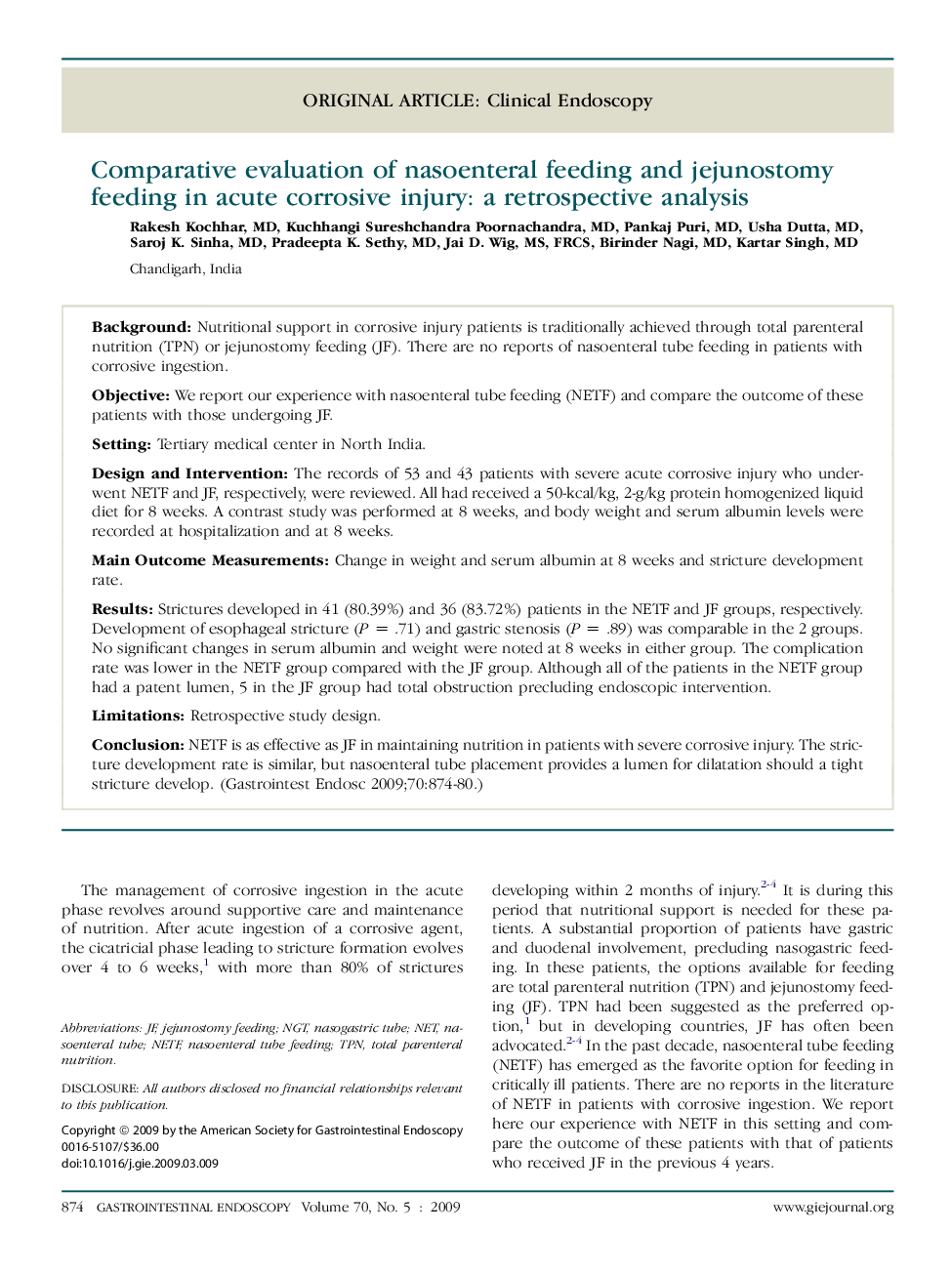| Article ID | Journal | Published Year | Pages | File Type |
|---|---|---|---|---|
| 3307511 | Gastrointestinal Endoscopy | 2009 | 7 Pages |
BackgroundNutritional support in corrosive injury patients is traditionally achieved through total parenteral nutrition (TPN) or jejunostomy feeding (JF). There are no reports of nasoenteral tube feeding in patients with corrosive ingestion.ObjectiveWe report our experience with nasoenteral tube feeding (NETF) and compare the outcome of these patients with those undergoing JF.SettingTertiary medical center in North India.Design and InterventionThe records of 53 and 43 patients with severe acute corrosive injury who underwent NETF and JF, respectively, were reviewed. All had received a 50-kcal/kg, 2-g/kg protein homogenized liquid diet for 8 weeks. A contrast study was performed at 8 weeks, and body weight and serum albumin levels were recorded at hospitalization and at 8 weeks.Main Outcome MeasurementsChange in weight and serum albumin at 8 weeks and stricture development rate.ResultsStrictures developed in 41 (80.39%) and 36 (83.72%) patients in the NETF and JF groups, respectively. Development of esophageal stricture (P = .71) and gastric stenosis (P = .89) was comparable in the 2 groups. No significant changes in serum albumin and weight were noted at 8 weeks in either group. The complication rate was lower in the NETF group compared with the JF group. Although all of the patients in the NETF group had a patent lumen, 5 in the JF group had total obstruction precluding endoscopic intervention.LimitationsRetrospective study design.ConclusionNETF is as effective as JF in maintaining nutrition in patients with severe corrosive injury. The stricture development rate is similar, but nasoenteral tube placement provides a lumen for dilatation should a tight stricture develop.
